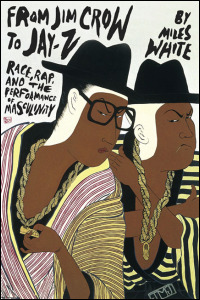 In August of 1985, the United States government under the administration of President Ronald Reagan secretly and illegally began selling weapons to Iran, which was engaged in what would be a bloody, eight-year long war with Saddam Hussein’s Iraq. The proceeds from these arms transactions, which ran into the tens of millions of dollars, were then secretly funneled to right-wing contra-rebel guerrillas in Nicaragua fighting to bring down that country’s leftist Sandinista regime. American support to the Nicaraguan Contras was in violation of the Boland Amendment passed by the U.S. congress and signed by Reagan in 1982. Nonetheless, officials working with the National Security Council and the Central Intelligence Agency had direct knowledge of these activities. The affair was exposed in 1986 and became the focus of extended congressional hearings in 1987 that resulted in the convictions of fourteen high-ranking officials in the Reagan administration, including Secretary of State Caspar Weinberger and National Security Agency chief John Poindexter.
In August of 1985, the United States government under the administration of President Ronald Reagan secretly and illegally began selling weapons to Iran, which was engaged in what would be a bloody, eight-year long war with Saddam Hussein’s Iraq. The proceeds from these arms transactions, which ran into the tens of millions of dollars, were then secretly funneled to right-wing contra-rebel guerrillas in Nicaragua fighting to bring down that country’s leftist Sandinista regime. American support to the Nicaraguan Contras was in violation of the Boland Amendment passed by the U.S. congress and signed by Reagan in 1982. Nonetheless, officials working with the National Security Council and the Central Intelligence Agency had direct knowledge of these activities. The affair was exposed in 1986 and became the focus of extended congressional hearings in 1987 that resulted in the convictions of fourteen high-ranking officials in the Reagan administration, including Secretary of State Caspar Weinberger and National Security Agency chief John Poindexter.
A related consequence of these events resulted in what became an immensely important footnote to the long and winding history of hip-hop music in the United States, one that remains controversial and relatively unexplored in popular culture studies. Investigations by the U.S. Congress and the Department of Justice have concluded that private airplanes used to ferry supplies to the Nicaraguan rebels were also being used to ship cocaine back into the United States, raising millions more in illegal funds for the resistance movement. These drug shipments were distributed to black inner-city drug lords on both coasts, establishing a link between these clandestine U.S. operations, the conflict in Nicaragua, Colombia drug cartels, and inner-city street gangs, all of which contributed to the crack cocaine epidemic of the 1980s.
This epidemic of cheap crack cocaine had a devastating effect on black communities across the country. Drug related gang violence and gun-related homicides among inner city black males rose dramatically. Hip-hop, barely a decade old, began to transform as the tone of the streets darkened, making the music and the culture surrounding it more malevolent. Street gangs, hustling and hip-hop converged in this moment and became critical to the formation of hardcore gangsta rap, which flourished into a new and popular musical genre. Most of the critical records and artists that defined this music appeared between the years 1985 and 1989, during the height of the epidemic and in the aftermath of the Iran-Contra affair, when representations of urban black males in recorded music, graphic art, magazine ads, music videos, feature films, and video games began to reformulate around notions of hardness. The different ways in which hardness manifested itself as a critical metaphor throughout this history—as attitude, as masculinity, as language, as ghetto narrative, as sound, and as imagery—suggests how the convergence of drugs and gangs altered the tone of hip-hop music and urban street culture.
The apotheosis of the contemporary hardcore “crack rap” performer is unquestionably the Brooklyn-born lyrical genius Jay-Z, a former New York City drug figure turned multimillionaire entertainment mogul whose repertoire is filled with songs and lyrics that boast of his rise from “bricks to billboards” and “grams to Grammys,” and who built his Roc Nation empire from slinging crack in the ‘hood one rock at a time. Jay-Z was not the first rapper to insert drug references into his songs; he is only one of a number of hardcore performers who, beginning with the autobiographical styles of Schoolly D and Ice-T in the 1980s and Tupac Shakur and the Notorious B.I.G. in the 1990s, inserted themselves into larger than life ‘hood tales that drew from their own experiences as street hustlers and gang affiliates. Jay-Z happens to have been the most successful and articulate hardcore rap artist of his generation, a transformational figure who single-handedly reframed the ghetto fabulous street thug as the penthouse glamorous Mafioso impresario.
*****
Formerly a professional musician and entertainment journalist, Miles White teaches at City University of Seattle in Bratislava, Slovakia. He is author of the the new book From Jim Crow to Jay-Z: Race, Rap, and the Performance of Masculinity.
